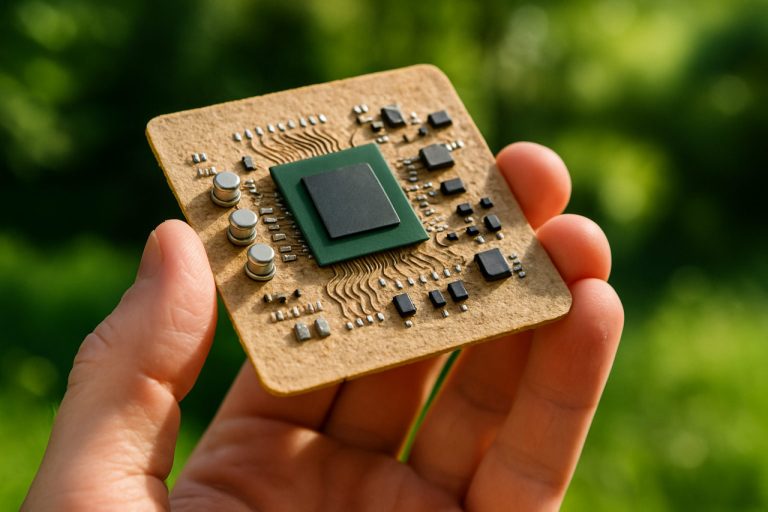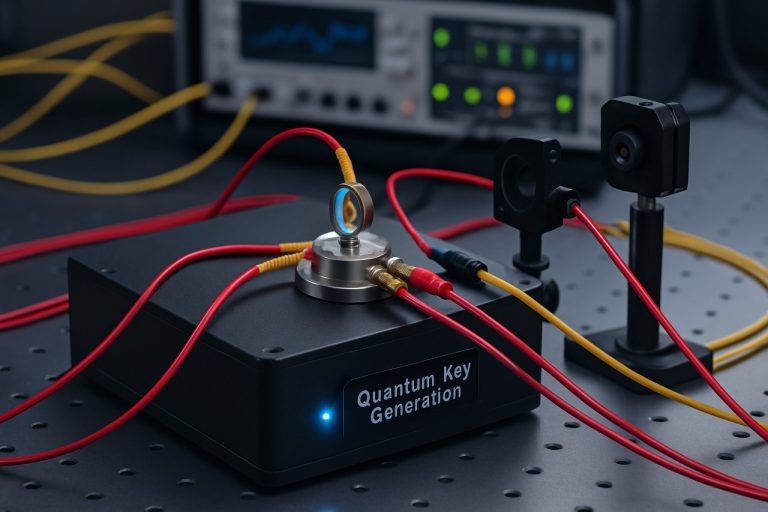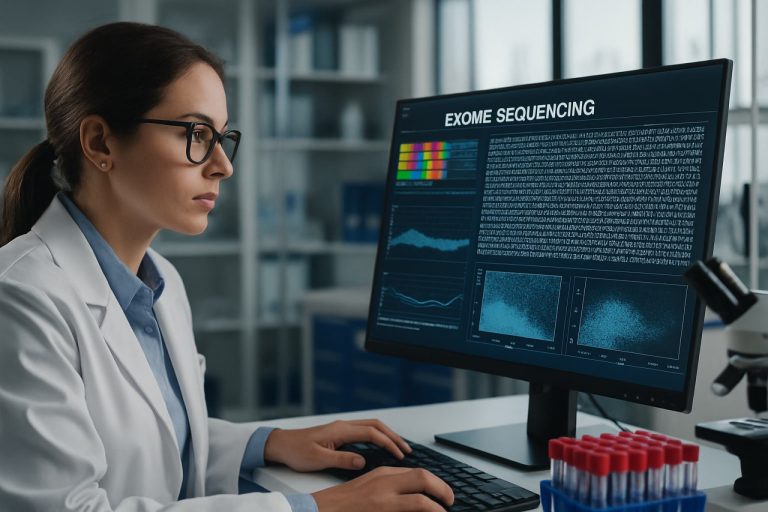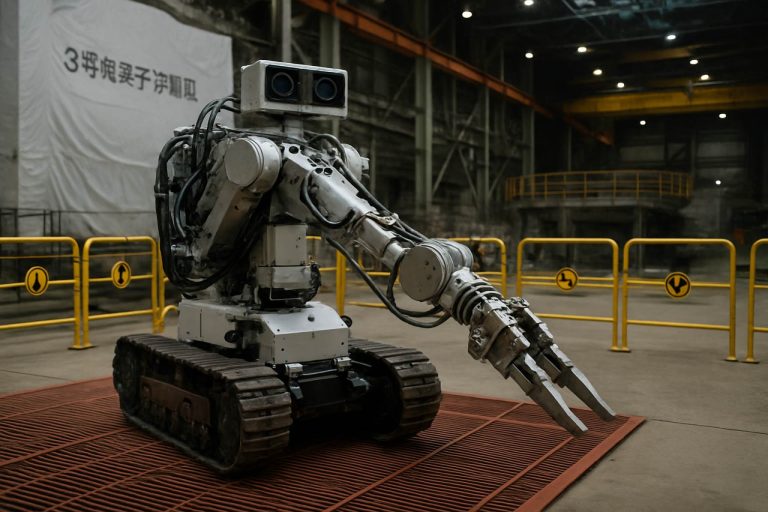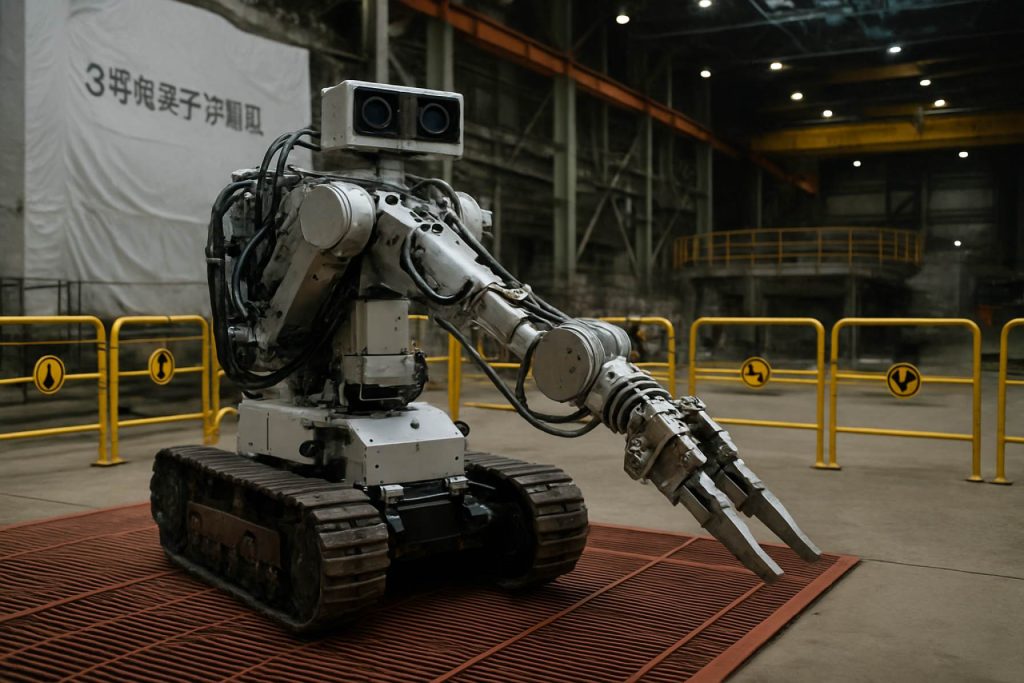
Inside the Robotic Revolution: How Advanced Automation is Transforming Fukushima Decommissioning in 2025 and Beyond. Explore the Technologies, Market Growth, and Strategic Shifts Shaping the Future of Nuclear Site Remediation.
- Executive Summary: Key Trends and Market Drivers in 2025
- Market Size and Growth Forecast (2025–2030): CAGR and Revenue Projections
- Regulatory Landscape and Safety Standards: Impact on Robotics Deployment
- Core Robotic Technologies: Remote Handling, AI, and Autonomous Systems
- Leading Players and Strategic Partnerships (e.g., Toshiba, Hitachi, IRID)
- Case Studies: Recent Robotic Deployments at Fukushima Daiichi
- Supply Chain and Component Innovations: Sensors, Mobility, and Materials
- Challenges: Radiation Hardening, Reliability, and Human-Robot Collaboration
- Investment, Funding, and Government Initiatives (e.g., METI, IRID)
- Future Outlook: Emerging Technologies and Long-Term Decommissioning Strategies
- Sources & References
Executive Summary: Key Trends and Market Drivers in 2025
The decommissioning of the Fukushima Daiichi Nuclear Power Plant remains one of the most complex engineering challenges of the 21st century, with robotics playing a pivotal role in ongoing and future operations. As of 2025, the market for Fukushima decommissioning robotics is shaped by a convergence of technological innovation, regulatory imperatives, and the unique hazards of the site. The Japanese government and Tokyo Electric Power Company Holdings, Inc. (TEPCO) continue to prioritize safety, efficiency, and transparency, driving demand for advanced robotic solutions capable of operating in high-radiation, debris-laden environments.
Key trends in 2025 include the deployment of increasingly sophisticated remotely operated vehicles (ROVs) and autonomous systems for tasks such as fuel debris investigation, sampling, and removal. Companies like Hitachi, Ltd. and Toshiba Corporation have developed specialized robots—such as submersible crawlers and articulated manipulators—designed to access and analyze the highly radioactive reactor interiors. These systems are equipped with advanced sensors, radiation-hardened components, and AI-driven navigation, enabling them to perform precise operations where human intervention is impossible.
A major milestone in 2025 is the anticipated start of trial fuel debris retrieval from Unit 2, following years of preparatory robotic surveys and mock-up testing. This phase will rely heavily on the performance of custom-built robotic arms and containment systems, with ongoing collaboration between Japanese technology leaders and international partners such as Mitsubishi Electric Corporation and ABB Ltd. The integration of real-time data analytics and remote monitoring platforms is also accelerating, allowing for more responsive and adaptive decommissioning strategies.
Market drivers include stringent regulatory oversight from the Nuclear Regulation Authority (NRA), public demand for risk minimization, and the need to address labor shortages in hazardous environments. Government funding and international cooperation—particularly with organizations like the International Research Institute for Nuclear Decommissioning (IRID)—are catalyzing R&D and deployment of next-generation robotics. The sector is also witnessing increased participation from specialized robotics firms and component suppliers, fostering a competitive ecosystem focused on reliability, miniaturization, and radiation tolerance.
Looking ahead, the outlook for Fukushima decommissioning robotics through the late 2020s is marked by incremental but critical advances in automation, machine learning, and remote operation. The lessons learned and technologies developed at Fukushima are expected to set new global benchmarks for nuclear decommissioning, with potential applications in other legacy reactor sites worldwide.
Market Size and Growth Forecast (2025–2030): CAGR and Revenue Projections
The Fukushima decommissioning robotics market is poised for significant growth between 2025 and 2030, driven by the ongoing and highly complex dismantling of the Fukushima Daiichi Nuclear Power Station. The Japanese government and Tokyo Electric Power Company Holdings, Inc. (TEPCO) have committed to a multi-decade decommissioning roadmap, with robotics playing a central role in addressing hazardous environments, high radiation, and inaccessible reactor interiors. As of 2025, the market is characterized by robust investment in advanced robotics, including remote-controlled manipulators, autonomous underwater vehicles (AUVs), and radiation-hardened inspection systems.
Key industry players such as Toshiba Corporation, Hitachi, Ltd., and Mitsubishi Heavy Industries, Ltd. are leading the development and deployment of specialized robots for fuel debris retrieval, structural mapping, and waste handling. These companies, in collaboration with international partners and Japanese research institutes, are scaling up R&D and commercialization efforts to meet the technical demands of the Fukushima site. For example, Toshiba and Hitachi have jointly developed submersible robots capable of navigating flooded reactor vessels and collecting critical data for decommissioning planning.
Market size estimates for Fukushima decommissioning robotics in 2025 are projected to exceed several hundred million USD, with annual growth rates (CAGR) anticipated in the range of 12–15% through 2030. This growth is underpinned by the Japanese government’s annual decommissioning budget, which allocates substantial funding for robotics and remote technologies, as well as by the increasing complexity of tasks as the project moves from initial stabilization to fuel debris removal and waste processing phases. The market is further supported by the export potential of Japanese-developed robotics solutions to other nuclear decommissioning projects worldwide.
Looking ahead, the period from 2025 to 2030 will see the introduction of next-generation robotics platforms, including AI-enhanced autonomous systems and modular robots designed for adaptability in unpredictable environments. The demand for such technologies is expected to accelerate as TEPCO targets the start of large-scale fuel debris retrieval in the late 2020s. The market outlook remains strong, with continued government backing, international collaboration, and the critical need for safe, efficient decommissioning solutions ensuring sustained revenue growth for leading suppliers and technology developers.
Regulatory Landscape and Safety Standards: Impact on Robotics Deployment
The regulatory landscape governing the deployment of robotics in the Fukushima decommissioning process is shaped by Japan’s stringent nuclear safety standards, evolving international guidelines, and the unique technical challenges posed by the site. As of 2025, the Japanese government, through the Nuclear Regulation Authority (NRA), continues to enforce rigorous protocols for the design, testing, and operation of robotic systems within the Fukushima Daiichi Nuclear Power Station. These regulations are intended to ensure both the safety of workers and the public, and the integrity of the decommissioning process.
Robotics have become indispensable in Fukushima due to the extreme radiation levels and hazardous environments that preclude human intervention. The NRA mandates comprehensive risk assessments and certification processes for all robotic equipment deployed on-site. This includes requirements for radiation tolerance, fail-safe mechanisms, remote operability, and emergency shutdown capabilities. The regulatory framework is periodically updated to reflect lessons learned from ongoing decommissioning activities and advances in robotics technology.
Internationally, Japan aligns its safety standards with recommendations from the International Atomic Energy Agency (IAEA), which provides guidance on the use of remote technologies in nuclear decommissioning. The IAEA’s safety standards emphasize the need for robust quality assurance, cybersecurity for remotely operated systems, and transparent reporting of incidents or malfunctions. These guidelines are integrated into Japan’s national regulations, fostering a harmonized approach to safety and innovation.
Key industry players such as Toshiba Corporation, Hitachi, Ltd., and Mitsubishi Heavy Industries are actively involved in the development and deployment of decommissioning robots. These companies work closely with regulatory authorities to ensure compliance, often participating in joint verification tests and pilot projects. For example, robots designed for fuel debris retrieval must undergo extensive validation in simulated environments before being authorized for use inside reactor buildings.
Looking ahead to the next few years, regulatory bodies are expected to place greater emphasis on the standardization of robotic interfaces and data protocols, facilitating interoperability among systems from different manufacturers. There is also a growing focus on the ethical and social implications of increased automation, including workforce retraining and public communication. The regulatory environment will likely continue to evolve in response to technological breakthroughs, operational feedback, and international collaboration, ensuring that safety remains paramount as robotics play an ever-larger role in the Fukushima decommissioning effort.
Core Robotic Technologies: Remote Handling, AI, and Autonomous Systems
The decommissioning of the Fukushima Daiichi Nuclear Power Station remains one of the most complex engineering challenges of the 21st century, with robotics at the forefront of ongoing and future operations. As of 2025, the focus is on the deployment and refinement of core robotic technologies—remote handling, artificial intelligence (AI), and autonomous systems—to safely dismantle and remove radioactive debris from the reactor site.
Remote handling robots have been essential since the early stages of the disaster response, but recent years have seen significant advancements. Companies such as Toshiba Corporation and Hitachi, Ltd. have developed specialized robots capable of operating in high-radiation environments, performing tasks such as debris removal, valve operation, and detailed inspections. For example, Toshiba’s submersible robots have been deployed to explore the interiors of reactor pressure vessels, providing critical data on fuel debris location and condition. These robots are equipped with radiation-hardened cameras and manipulators, allowing for precise operations in areas inaccessible to humans.
AI integration is increasingly central to robotic operations at Fukushima. Machine learning algorithms are being used to process vast amounts of visual and sensor data collected by inspection robots, enabling more accurate mapping of hazardous zones and identification of fuel debris. Mitsubishi Electric Corporation is actively developing AI-driven control systems that enhance the autonomy and adaptability of decommissioning robots, reducing the need for direct human intervention and improving operational safety.
Autonomous systems are also advancing, with a focus on multi-robot coordination and remote operation over long distances. Tokyo Electric Power Company Holdings, Inc. (TEPCO), the plant operator, is collaborating with domestic and international partners to test fleets of semi-autonomous robots for synchronized tasks such as waste sorting and transport. These systems are designed to operate continuously in hazardous environments, leveraging wireless communication and real-time data sharing to optimize task allocation and minimize downtime.
Looking ahead to the next few years, the outlook for Fukushima decommissioning robotics is marked by ongoing innovation and international collaboration. The Japanese government and industry leaders are investing in next-generation robots with enhanced mobility, dexterity, and AI capabilities. The goal is to begin large-scale fuel debris retrieval by 2027, a milestone that will rely heavily on the successful integration of these core robotic technologies. As these systems mature, they are expected to set new standards for nuclear decommissioning worldwide, with potential applications in other challenging environments.
Leading Players and Strategic Partnerships (e.g., Toshiba, Hitachi, IRID)
The decommissioning of the Fukushima Daiichi Nuclear Power Station remains one of the most complex engineering challenges of the 21st century, with robotics at the core of ongoing and future operations. As of 2025, the landscape is defined by a consortium of Japanese industrial giants, specialized robotics firms, and collaborative research organizations, each playing a pivotal role in the development and deployment of advanced robotic solutions.
Toshiba Corporation continues to be a central figure in Fukushima decommissioning robotics. The company has developed a series of remote-controlled and semi-autonomous robots, such as the “Scorpion” and “Crawler” models, designed to navigate hazardous reactor interiors and collect critical data. Toshiba’s expertise in nuclear engineering and robotics integration has positioned it as a primary contractor for Tokyo Electric Power Company (TEPCO), the plant operator. In recent years, Toshiba has focused on enhancing the radiation tolerance and dexterity of its robots, enabling more precise debris removal and fuel retrieval tasks expected to intensify through 2025 and beyond (Toshiba Corporation).
Hitachi, Ltd. is another major player, leveraging its extensive experience in industrial automation and nuclear systems. Hitachi has partnered with General Electric (GE) through their joint venture, Hitachi-GE Nuclear Energy, to develop robots capable of mapping, sampling, and decontaminating reactor buildings. Their collaborative approach extends to the integration of AI-driven navigation and sensor fusion, which are critical for operating in the unpredictable and high-radiation environments of Fukushima. Hitachi’s ongoing projects include the deployment of remotely operated vehicles (ROVs) for underwater fuel debris investigation, a key step in the multi-decade decommissioning roadmap (Hitachi, Ltd.).
The International Research Institute for Nuclear Decommissioning (IRID) serves as a strategic hub, coordinating R&D efforts among industry, academia, and government. IRID’s role is to identify technical challenges, fund prototype development, and facilitate field trials at Fukushima. The organization has fostered partnerships with both domestic and international robotics suppliers, accelerating the transfer of advanced technologies such as radiation-hardened actuators and teleoperation systems. IRID’s open innovation model is expected to yield new robotic platforms tailored for the unique demands of Fukushima’s reactors over the next several years (International Research Institute for Nuclear Decommissioning).
Other notable contributors include Mitsubishi Heavy Industries, which is developing heavy-lift robotic arms for large debris removal, and Panasonic Corporation, supplying sensor and imaging technologies for situational awareness. Strategic partnerships between these companies, often under the guidance of IRID and in collaboration with TEPCO, are essential for meeting the evolving technical requirements and accelerating the safe decommissioning of Fukushima Daiichi.
Case Studies: Recent Robotic Deployments at Fukushima Daiichi
The decommissioning of the Fukushima Daiichi Nuclear Power Station remains one of the most complex engineering challenges of the 21st century, with robotics playing a pivotal role in addressing hazardous environments inaccessible to humans. Since 2021, the pace of robotic deployments has accelerated, with several notable case studies highlighting both technological progress and persistent challenges as of 2025.
A landmark event occurred in 2022 when a remotely operated submersible robot, developed by Toshiba Corporation in collaboration with Hitachi, Ltd., successfully entered the Unit 1 reactor’s primary containment vessel. This robot, equipped with advanced radiation-hardened cameras and manipulators, provided the first high-resolution images and radiation readings of fuel debris since the 2011 accident. The data collected has been instrumental in planning future debris retrieval operations, confirming the presence and distribution of melted fuel and structural damage within the vessel.
In 2023, Mitsubishi Electric Corporation introduced a new robotic arm system designed for precision sampling and debris handling in high-radiation zones. This system, featuring force-feedback and AI-assisted path planning, was deployed in Unit 2 to extract small samples of fuel debris for offsite analysis. The operation marked the first successful retrieval of debris samples from inside a reactor, a critical step toward full-scale removal scheduled for the late 2020s.
Another significant deployment involved the use of underwater robots by Tokyo Electric Power Company Holdings, Inc. (TEPCO) and its partners. In 2024, a new generation of compact, highly maneuverable submersibles was sent into the flooded lower levels of Unit 3. These robots mapped sediment and debris fields, identifying obstacles and potential retrieval routes. The mapping data is now being used to design custom end-effectors and retrieval tools for future missions.
Looking ahead to 2025 and beyond, the focus is shifting toward scaling up debris retrieval operations. TEPCO and its technology partners are developing semi-autonomous robotic platforms capable of sustained operation in extreme radiation and underwater conditions. The integration of AI for real-time decision-making and remote collaboration is expected to further enhance efficiency and safety. However, challenges remain, including the need for greater radiation tolerance, improved mobility in confined spaces, and robust teleoperation systems to handle unforeseen obstacles.
These recent deployments underscore the critical role of robotics in the Fukushima decommissioning process. As technology advances, the next few years are expected to see more sophisticated, resilient, and autonomous systems, gradually enabling the safe removal of hazardous materials and setting new benchmarks for nuclear decommissioning worldwide.
Supply Chain and Component Innovations: Sensors, Mobility, and Materials
The decommissioning of the Fukushima Daiichi Nuclear Power Plant remains one of the most complex engineering challenges of the 21st century, with robotics at the forefront of ongoing efforts. As of 2025, the supply chain for Fukushima decommissioning robotics is characterized by rapid innovation in sensors, mobility systems, and materials, driven by the unique demands of high-radiation, debris-laden environments.
Sensor technology is a critical focus, as robots must operate in areas inaccessible to humans and provide real-time data on radiation, temperature, and structural integrity. Japanese manufacturers such as Toshiba Corporation and Hitachi, Ltd. have developed advanced radiation-hardened cameras, LIDAR, and dosimeters. These sensors are designed to withstand cumulative radiation doses exceeding 1 MGy, a threshold that would quickly incapacitate conventional electronics. In 2024, Toshiba Corporation introduced a new generation of compact gamma cameras and 3D mapping sensors, enabling more precise localization of melted fuel debris and structural anomalies within reactor buildings.
Mobility solutions have also evolved significantly. Early robots often became immobilized by debris or failed due to high radiation. Recent years have seen the deployment of multi-modal robots capable of switching between tracked, wheeled, and even snake-like articulated locomotion. Hitachi, Ltd. and Mitsubishi Electric Corporation have collaborated on robots with modular chassis and adaptive suspension, allowing them to traverse rubble, climb stairs, and access submerged areas. These platforms are increasingly equipped with autonomous navigation algorithms, reducing operator workload and improving mission success rates.
Material innovation is another cornerstone of the supply chain. Robotics suppliers are utilizing radiation-resistant alloys, ceramics, and specialized polymers to extend operational lifespans. For example, Toshiba Corporation has reported the use of titanium alloys and polyether ether ketone (PEEK) components in critical joints and housings. These materials are selected for their resistance to embrittlement and corrosion in radioactive and humid environments.
Looking ahead to the next few years, the supply chain is expected to further integrate domestic and international expertise. Japanese firms are increasingly partnering with global suppliers of high-reliability sensors and actuators, while also investing in local manufacturing to ensure quality control and rapid iteration. The Japanese government, through agencies such as the Tokyo Electric Power Company (TEPCO), continues to fund R&D and pilot deployments, aiming to accelerate the timeline for fuel debris retrieval and site remediation. The outlook for 2025 and beyond is one of continued incremental innovation, with a focus on reliability, miniaturization, and the ability to operate in ever more challenging conditions.
Challenges: Radiation Hardening, Reliability, and Human-Robot Collaboration
The decommissioning of the Fukushima Daiichi Nuclear Power Plant remains one of the most complex engineering challenges of the 21st century, with robotics playing a central role in addressing hazardous environments inaccessible to humans. As of 2025, the primary challenges in deploying robotics for Fukushima decommissioning revolve around three interrelated domains: radiation hardening, reliability, and human-robot collaboration.
Radiation Hardening is a critical requirement for any robotic system operating within the reactor buildings, where radiation levels can rapidly degrade electronic components and mechanical systems. Despite advances in shielding and the use of radiation-tolerant materials, robots deployed by Toshiba Corporation and Hitachi, Ltd. have experienced significant failures due to unexpected radiation spikes and the cumulative effects of exposure. For example, several robots sent to investigate the Unit 2 and Unit 3 reactor vessels in recent years ceased functioning after only a few hours or days, highlighting the ongoing need for robust hardening strategies. Current efforts focus on the integration of silicon carbide semiconductors, redundant circuit designs, and modular components that can be swapped or repaired remotely.
Reliability is closely tied to radiation resilience but also encompasses mechanical durability and operational consistency in highly variable and unpredictable environments. The debris fields inside the reactors are littered with twisted metal, melted fuel, and water, posing severe mobility and manipulation challenges. Companies such as Mitsubishi Electric Corporation and Tokyo Electric Power Company Holdings, Inc. (TEPCO) have invested in multi-legged and tracked robots capable of traversing uneven terrain, but even these advanced systems are prone to entanglement, loss of communication, or mechanical breakdowns. The next few years are expected to see the deployment of more autonomous navigation algorithms and self-diagnostic systems to improve mission success rates and reduce the need for direct human intervention.
Human-Robot Collaboration is essential for maximizing the effectiveness of robotic interventions while ensuring safety and adaptability. Operators must interpret sensor data, make real-time decisions, and sometimes manually control robots in response to unforeseen obstacles. Toshiba Corporation and Hitachi, Ltd. are developing advanced teleoperation interfaces, including haptic feedback and augmented reality overlays, to enhance situational awareness and reduce operator fatigue. Additionally, collaborative frameworks are being established to allow multiple robots and human teams to work in concert, sharing data and coordinating tasks.
Looking ahead, the outlook for Fukushima decommissioning robotics in 2025 and beyond is cautiously optimistic. Continued investment in radiation-hardened electronics, robust mechanical designs, and intuitive human-robot interfaces is expected to yield incremental improvements in reliability and mission success. However, the extreme conditions inside the reactors will continue to test the limits of current technology, necessitating ongoing innovation and close collaboration between industry leaders such as Toshiba Corporation, Hitachi, Ltd., Mitsubishi Electric Corporation, and TEPCO.
Investment, Funding, and Government Initiatives (e.g., METI, IRID)
The decommissioning of the Fukushima Daiichi Nuclear Power Station remains one of the most complex engineering challenges of the 21st century, with robotics at the core of ongoing and future efforts. Investment, funding, and government initiatives—particularly from Japan’s Ministry of Economy, Trade and Industry (METI) and the International Research Institute for Nuclear Decommissioning (IRID)—are pivotal in driving technological advancements and deployment in this sector.
For 2025 and the coming years, the Japanese government continues to allocate substantial resources to accelerate the development and deployment of specialized robotics for Fukushima. METI’s annual budget for decommissioning-related R&D, including robotics, has consistently exceeded ¥30 billion (approx. $200 million USD) in recent years, with a significant portion earmarked for robotics and remote handling technologies. This funding supports both direct R&D and collaborative projects with private sector partners and academic institutions. METI’s “Nuclear Damage Compensation and Decommissioning Facilitation Corporation” (NDF) also plays a key role in channeling funds and coordinating between stakeholders.
IRID, established in 2013 as a consortium of utilities, manufacturers, and research organizations, remains central to the strategic direction and technical execution of decommissioning robotics. IRID’s ongoing programs focus on the development of robots capable of investigating, mapping, and eventually removing fuel debris from the reactor basements—tasks that are impossible for humans due to high radiation. IRID’s collaborative model brings together major Japanese engineering and technology firms, including Toshiba Corporation, Hitachi, Ltd., and Mitsubishi Heavy Industries, all of which have developed and deployed custom robots for Fukushima’s unique environment.
In 2025, the focus is on scaling up from proof-of-concept and pilot deployments to more robust, field-ready robotic systems. For example, METI and IRID are funding the next generation of submersible and articulated robots designed to enter the primary containment vessels and retrieve radioactive debris. These initiatives are complemented by investments in AI-driven remote operation, advanced sensor integration, and radiation-hardened materials.
Looking ahead, the Japanese government has signaled its intent to maintain or increase funding through at least 2030, recognizing that the most challenging phases of decommissioning—fuel debris retrieval and waste management—will require continued innovation. International collaboration is also expected to grow, with organizations such as International Atomic Energy Agency providing technical guidance and facilitating knowledge exchange.
- METI: Principal government funder and policy driver for decommissioning robotics.
- IRID: Central R&D and coordination body, integrating efforts of major Japanese technology firms.
- Toshiba, Hitachi, Mitsubishi Heavy Industries: Key industrial partners developing and deploying robotics solutions.
- IAEA: International technical support and oversight.
Overall, the next few years will see intensified investment and government-backed initiatives, with a clear focus on transitioning from R&D to large-scale, operational deployment of robotics at Fukushima.
Future Outlook: Emerging Technologies and Long-Term Decommissioning Strategies
The decommissioning of the Fukushima Daiichi Nuclear Power Station remains one of the most complex engineering challenges of the 21st century, with robotics at the forefront of ongoing and future strategies. As of 2025, the focus is shifting from initial stabilization and debris mapping to the actual retrieval of highly radioactive fuel debris, a process expected to span decades. The next few years will see the deployment of increasingly sophisticated robotic systems, designed to operate in extreme radiation, underwater environments, and confined spaces inaccessible to humans.
Key players in this field include Toshiba Corporation, Hitachi, Ltd., and Mitsubishi Heavy Industries, all of which have collaborated with the plant operator, Tokyo Electric Power Company (TEPCO), to develop and deploy specialized robots. For example, Toshiba and Hitachi have engineered remotely operated vehicles (ROVs) and articulated robotic arms capable of withstanding high radiation and navigating the flooded reactor basements. In 2024, a prototype “submersible crawler” successfully entered Reactor 1’s primary containment vessel, providing critical data on fuel debris distribution and environmental conditions, paving the way for debris retrieval trials scheduled for 2025 and beyond.
Emerging technologies in the pipeline include advanced AI-driven navigation, enhanced radiation shielding, and modular robotic platforms that can be reconfigured for different tasks. Toshiba Corporation is developing next-generation robots with improved dexterity and feedback systems, enabling more precise manipulation of debris and contaminated materials. Meanwhile, Hitachi, Ltd. is focusing on integrating real-time 3D mapping and autonomous pathfinding to reduce operator workload and increase safety margins.
International collaboration is also intensifying. The UK’s National Nuclear Laboratory and France’s Orano are sharing expertise in remote handling and waste packaging, contributing to the design of new robotic tools and end-effectors tailored for Fukushima’s unique challenges. These partnerships are expected to accelerate the development and deployment of robust, scalable robotic solutions over the next several years.
Looking ahead, the long-term strategy for Fukushima’s decommissioning hinges on the successful integration of robotics with digital twin simulations, remote monitoring, and automated waste processing. The Japanese government and TEPCO have outlined a roadmap targeting the start of full-scale fuel debris retrieval by the late 2020s, with robotics playing a central role in minimizing human exposure and ensuring operational safety. As these technologies mature, lessons learned at Fukushima are likely to set new global standards for nuclear decommissioning robotics.
Sources & References
- TEPCO
- Hitachi, Ltd.
- Toshiba Corporation
- Mitsubishi Electric Corporation
- IRID
- Mitsubishi Heavy Industries, Ltd.
- International Atomic Energy Agency
- National Nuclear Laboratory
- Orano
